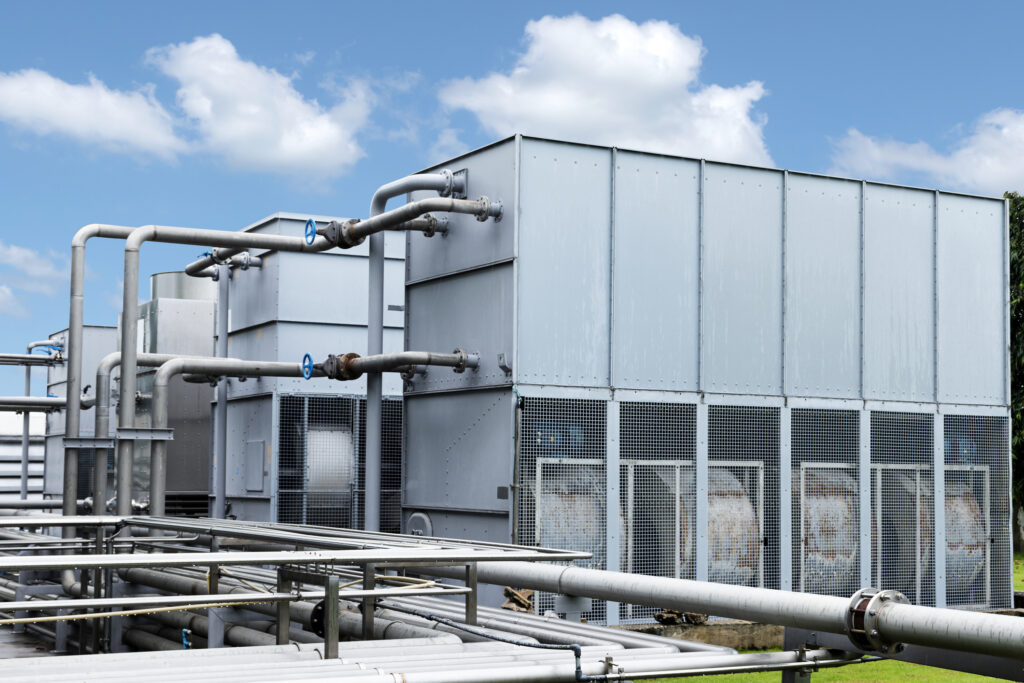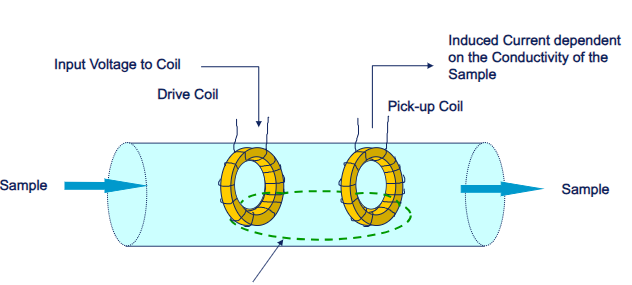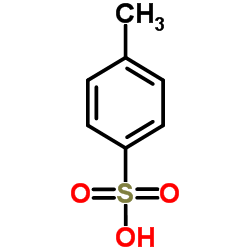Conductivity sensors play a critical role in power generation, monitoring water and steam quality to ensure the efficiency and longevity of turbines and boilers. In this article, we review conductivity sensors, their various types, and their applications in power generation systems.
What are Conductivity Sensors
Conductivity sensors are important tools for determining a liquid’s ability to conduct electrical current. This capability, also known as electrical conductivity, directly relates to the concentration of ions present in the liquid. By detecting and analyzing these ions, conductivity sensors provide essential data for various industrial processes, including power generation. Generally, these sensors are versatile and highly reliable, thus making them essential for maintaining efficiency in systems requiring precise liquid measurements.

How Does a Conductivity Sensor Work
Conductivity sensors operate by applying an alternating current (AC) voltage between at least two electrodes submerged in a liquid. This voltage causes ions in the liquid to move, thus creating an electrical current. Moreover, the sensor measures the current flow between the electrodes, which is proportional to the conductivity of the liquid. The sensor then utilizes this relationship to convert the electrical current into a conductivity value. Generally, this conductivity value will be in micro-Siemens per centimeter (µS/cm) or milli-Siemens per centimeter (mS/cm). The higher the ion concentration in the liquid, the greater the conductivity, and vice versa.
In addition to their primary function, conductivity sensors often include features like temperature compensation. Since the conductivity of a liquid can change with temperature, compensation enables the adjustment of readings to provide accurate measurements regardless of temperature fluctuations. This ability is crucial in environments like power generation, where conductivity sensors operate under varying conditions.
Types of Conductivity Sensors
Categories of conductivity sensors include contacting, inductive, and ultrasonic conductivity sensors, according to their measurement principle. However, the first two are the most common as they deliver more reliable measurements.
Contacting Conductivity Sensors
Contacting, or electrode type, measures conductivity based on the principle of electrolytic conduction and is the most common type. They work by placing at least two electrodes in direct contact with the liquid and applying a constant voltage to them. Changes in the liquid resistance in the conductivity cell cause the current of the measuring electrode to change. Hence, the sensor measures the liquid’s conductivity based on the resulting current flow. These sensors are highly effective in environments with low to medium conductivity levels. Therefore, making them ideal for applications such as water purification, boiler feedwater monitoring, and quality control in industrial processes. In addition, contacting conductivity sensors are relatively simple to install and maintain, offering a cost-effective solution for most standard measurement tasks.
However, contacting sensors’ sensitivity to fouling or contamination is one limitation. Over time, deposits can build up on the electrodes, potentially leading to inaccurate readings. As a result, regular maintenance and cleaning are necessary to ensure continued accuracy. Contact conductivity sensors can be further divided into the following.
Two-Electrode Configuration
The two-electrode, or two-cell, configuration, as the name implies, consists of two electrodes positioned within the liquid. Moreover, the sensor measures conductivity on the basis of current flow between these electrodes. This is the most basic and cost-effective configuration, making it suitable for general-purpose applications. See the figure below, where G= Conductivity, I= Amps, and V= Volts. However, they may not perform well in highly conductive solutions or environments with wide conductivity ranges. This is because their accuracy diminishes in extreme conditions.

Three-Electrode Configuration
The three-electrode, or three-cell, configuration introduces an extra electrode to the two-cell setup to improve measurement stability. This additional electrode serves as a guard, reducing errors from stray capacitance as well as polarization effects. As a result, there is more versatility and better accuracy, especially in low-conductivity environments, than the two-cell sensor. But this comes at a higher cost.
Four-Electrode Configuration
This configuration utilizes four electrodes, with two outer electrodes applying the voltage while the two inner electrodes measure the current. As a result, it completely eliminates the influence of electrode polarization, ensuring precise measurement across a wide range of conductivities. This provides the highest accuracy of all the current configurations but is more complex and expensive, so their deployment is primarily for specialized or demanding environments.
Toroidal Conductivity Sensors
Inductive, or toroidal, conductivity sensors offer an alternative approach by eliminating direct contact between the electrodes and the liquid. Instead of using electrodes, these sensors rely on a magnetic field generated by a toroidal coil. After immersing the sensor in a conductive liquid, the magnetic field induces a current within the liquid, which helps determine its conductivity.

Inductive sensors excel in applications involving highly corrosive or dirty liquids, where direct contact with electrodes could cause rapid degradation or fouling. Common uses include monitoring wastewater, chemical processing, and other harsh industrial environments. Also, as their design makes them less prone to fouling, so there is no need for frequent maintenance. This is a key advantage as it ensures long-term durability. However, they tend to be more expensive than contacting sensors, so toroidal sensors usually serve when the liquid conditions justify the additional cost.
Applications of Conductivity Sensors in Power Generation
Conductivity sensors play a pivotal role in ensuring the efficiency and safety of power generation processes. They are also vital for monitoring the quality of boiler water, optimizing cooling tower operations, managing condensate return systems, and more. The following sections delve into these key applications of conductivity sensors and explore best practices for their implementation.
Monitoring Boiler Water Quality
In power generation, conductivity sensors help maintain boiler water’s purity. Contaminants in boiler water can lead to scaling, corrosion, and reduction in efficiency, ultimately causing equipment damage and costly downtime. Conductivity sensors monitor the ionic content of the boiler water, providing real-time data on its purity levels. By measuring conductivity, operators can detect impurities early and take corrective actions, such as adjusting water treatment processes or initiating blowdown procedures. Regular monitoring ensures that the water remains within acceptable conductivity limits, preventing damage and also optimizing boiler performance.
Best practices for implementing conductivity sensors in boiler systems include placing sensors in key locations such as the boiler feedwater, condensate, and blowdown lines. It is also essential to calibrate sensors regularly and integrate them with automated control systems. This will provide continuous monitoring and rapid response if there are any deviations.
Optimizing Cooling Tower Efficiency
Cooling towers are integral to the power generation process, as they dissipate heat from the system. However, the water serving in cooling towers can accumulate dissolved solids over time, leading to scaling, corrosion, and biofouling. Deploying conductivity sensors to monitor the ionic concentration in the cooling water ensures optimal tower performance. By continuously measuring conductivity, operators can determine when to perform blowdown — removing a portion of the water to reduce the concentration of dissolved solids. This practice prevents the buildup of harmful deposits and maintains the efficiency of the cooling tower. In addition, conductivity sensors help optimize the use of water treatment chemicals, reducing operational costs and environmental impact.
For best results, position conductivity sensors in the cooling tower’s return line. Because this is where they can provide the most accurate readings of the water’s condition. Integrating these sensors with the tower’s control system enables automatic adjustments, ensuring consistent performance and reducing manual intervention.
Managing Condensate Return Systems
In power plants, condensate return systems recycle condensed steam back into the boiler, conserving water and energy. However, if the condensate becomes contaminated, it can introduce impurities into the boiler, leading to inefficiencies and damage. Conductivity sensors are essential for monitoring the purity of the condensate, ensuring that it is free from contaminants before it re-enters the boiler system. As the sensors detect changes in conductivity, operators can identify contamination early and take appropriate measures. For example, operators may decide to divert the condensate for treatment before reuse. This proactive approach helps maintain boiler efficiency and prolongs the lifespan of the equipment.
For effective monitoring, locate sensors at strategic points such as at the condensate pump discharge or before the condensate enters the feedwater tank. Also, regular calibration and maintenance of these sensors are crucial for accurate readings and reliable performance.
AlpHa’s Conductivity Sensors in Power Generation
At Alpha, our rich conductivity sensor portfolio is suitable for a wide range of industrial processes, including power generation. Some features of our sensor offering include:
- Conductivity measurements ranging from 0.055 µS/cm to 1,000 mS/cm.
- Also able to operate at temperatures from -5 to 200°C.
- Contacting (two, three, and four cell) and inductive types available.
- Variety of housing material options like glass, stainless steel, PTFE, etc.
- Custom mechanical assemblies.
For more details, please review our website or contact us today.




